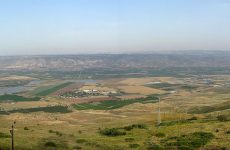Joint Operation of Britain, France and Israel against Egypt
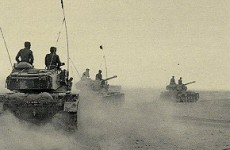
On October 29, 1956 Britain, France and Israel launched a military operation against Egypt. In a swift, sweeping operation of 100 hours, under the leadership of then Chief of the General Staff, Moshe Dayan, the entire Sinai peninsula fell into Israeli hands, at a cost of 231 soldiers killed. This operation was held in response to the closing of the Suez Canal by the Egyptians and terrorist attacks on Israel that violated the armistice agreement between the two countries.
Listen to Gamal Abdul Nasser
Listen to Abba Eban
In the fall of 1948, six months after the state of Israel was established, the UN security council called on Israel and the Arab states to negotiate armistice agreements. By the summer of 1949, armistice agreements had been negotiated between Israel and Egypt, Jordan, Lebanon, and Syria.
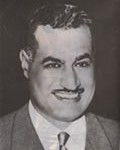
Egypt had maintained its state of belligerency with Israel after the armistice agreement was signed. In 1955, Egyptian president Gamal Abdel Nasser began to import arms from the Soviet bloc to build his arsenal for the confrontation with Israel. In the short-term, however, he employed a new tactic to prosecute Egypt’s war with Israel. He announced it on August 31, 1955:
“Egypt has decided to dispatch her heroes, the disciples of Pharaoh and the sons of Islam and they will cleanse the Land of Israel…. There will be no peace on Israel’s border because we demand vengeance, and vengeance is Israel’s death. ”
These “heroes” were Arab terrorists, or fedayoun, trained and equipped by Egyptian intelligence to engage in hostile action on the borders and to infiltrate Israel to commit acts of sabotage and murder, mainly of women and children.

Israeli Ambassador to the UN, Abba Eban , explained the provocations to the security council on October 30:
“There is aggression, there is belligerency in the Middle East, but we for eight years have been its victims, not its authors. That is what I mean when I say that world opinion as here represented should decide whom to trust. Shall it be the small free people establishing its homeland in peace and constructive progress or shall it be the dictatorship which has bullied and blustered and blackmailed its way across the international life of our times, threatening peace in many continents, openly avowing belligerency, placing its fist upon the jugular vein of the world’s communications, bringing the Middle East and the world ever nearer to the threshold of conflict, intimidating all those who stand in its path…” (Read the Full speech here)
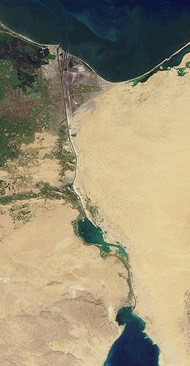
On July 26 , 1956, Egypt, under the leadership of President Gamal Abdel Nasser , blockaded the Gulf of Aqaba , closed the Suez canal to Israeli shipping, and announced the nationalization of the canal. The Suez Canal was opened in 1869 , having been financed by France and the Egyptian governments. Later, the Egyptian government’s share was bought by the British. The canal was of strategic importance, being the link between Britain and its Empire of India , and the area as a whole was strategic to North Africa and the Middle East.
In the months that followed Egypt’s nationalization of the canal, a secret meeting between France, Britain and Israel took place at Severes, outside Paris. The Israeli delegation was lead by Prime Minister Ben-Gurion, Moshe Dayan and Shimon Peres. Details only emerged years later, as records of the meeting were suppressed and destroyed. All parties agreed that Israel should invade and that Britain and France would subsequently intervene, instruct the Israeli and Egyptian armies to withdraw their forces from either side of the canal, and then place an Anglo-French intervention force in the Canal Zone around Port Said . It was to be called “Operation Musketeer”.
The Invasion
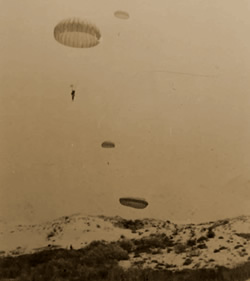
When the decision was made to go to war in 1956, more than 100,000 soldiers were mobilized in less than 72 hours and the air force was fully operational within 43 hours. Paratroopers landed in the Sinai and Israeli forces quickly advanced unopposed toward the Suez Canal before halting in compliance with the demands of England and France. As expected, the Egyptians ignored the Anglo-French ultimatum to withdraw to the west bank of the Canal.
On October 30, the United States sponsored a Security Council resolution calling for an immediate Israeli withdrawal, but England and France vetoed it. The following day, the two allies launched air operations, bombing Egyptian airfields near Suez.
Given the pretext to continue fighting, the Israeli forces routed the Egyptians. The IDF’s armored corps swept across the desert, capturing virtually the entire Sinai by November 5. That day, British and French paratroops landed near Port Said and amphibious ships dropped commandos on shore. British troops captured Port Said and advanced to within 25 miles of Suez City before the British government abruptly agreed to a cease-fire.
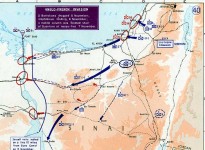
(from Wikipedia)
Though their allies had failed to accomplish their goals, the Israelis were satisfied at having reached theirs in an operation that took only 100 hours. By the end of the fighting, Israel held the Gaza Strip and had advanced as far as Sharm al-Sheikh along the Red Sea. A total of 231 Israeli soldiers died in the fighting.
Summary of the events that lead to the suez war
| End of 1955 | The Egyptians complete a big purchase of weapons and arms from the Soviet Bloc |
| June 22, 1956 | Prime Minister Ben-Gurion approves military cooperation between Israel and France . |
| July 26 | Egypt declares the nationalization of the Suez Canal. Nikita Khrushchev, Secretary of the Communist Party of the Soviet Union sends Russian experts to help the Egyptians. |
| August 9 | As a result of the nationalization France and Britain begin their military preparations, placing their forces in Cyprus and Malta. |
| September 11 | 6 IDF soldiers killed in Bet-Gubrin. The killers came from Jordan. |
| September 25 | Israeli archeologists murdered in Jerusalem. The killers came from Jordan. |
| September 27 | Iraq moves an army division to the Jordanian border. |
| September 28 | An Israeli delegation headed by FM Golda Meir holds a secret meeting in France. |
| October 10 | 2 Israeli workers murdered in a field near Tel-Mond.The killers came from Jordan. |
| October 22 | Israeli delegation headed by PM Ben-Gurion takes off to France to sign the agreement with France and Britain. |
| October 24 | The agreement is signed to open the war in Sinai |
| October 29 | The IDF invades Sinai |


